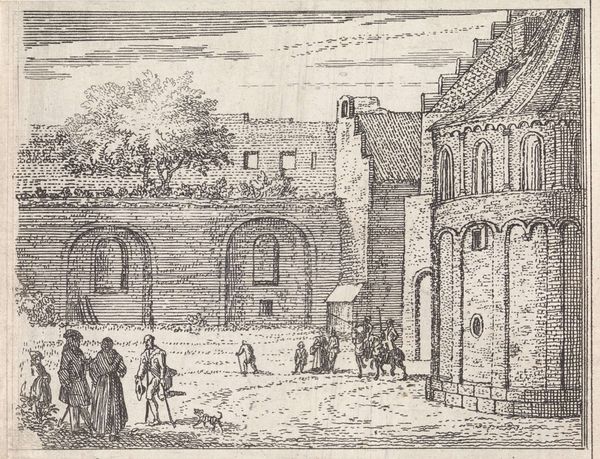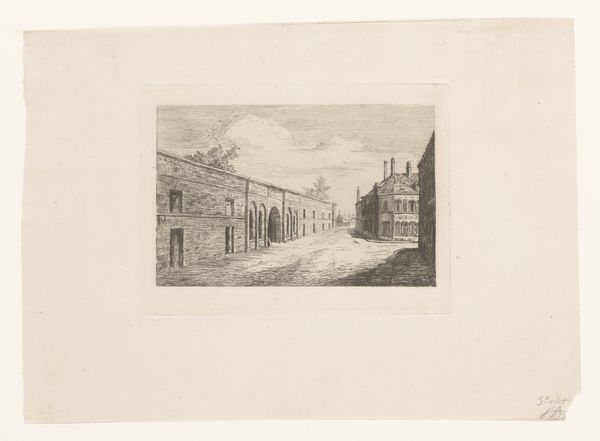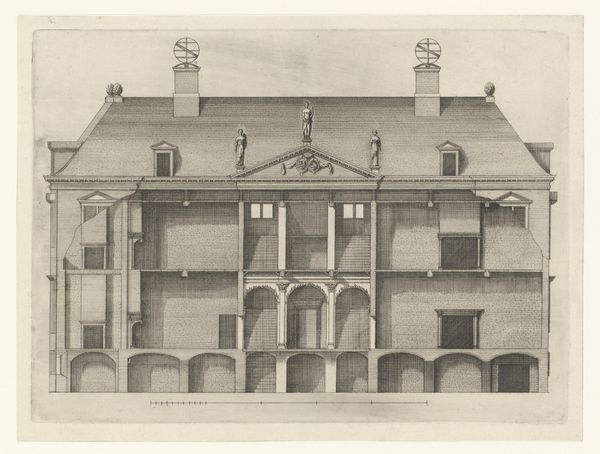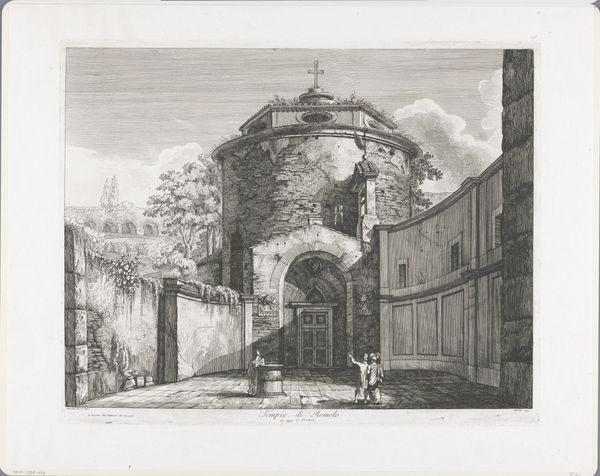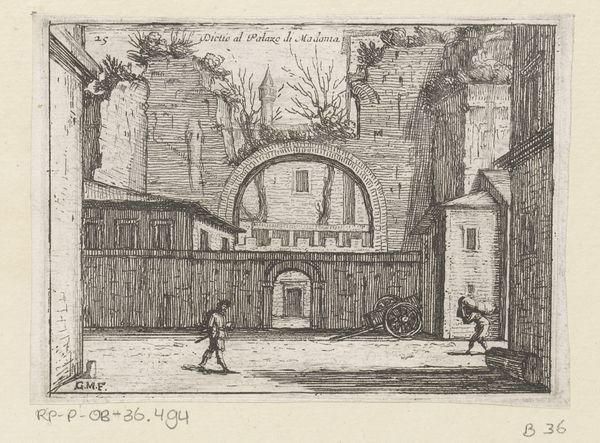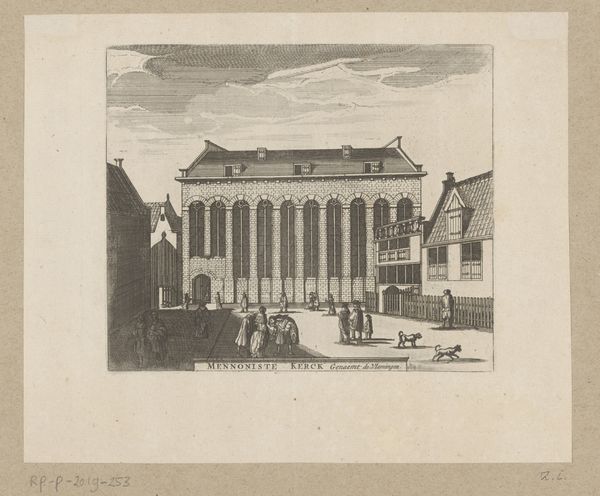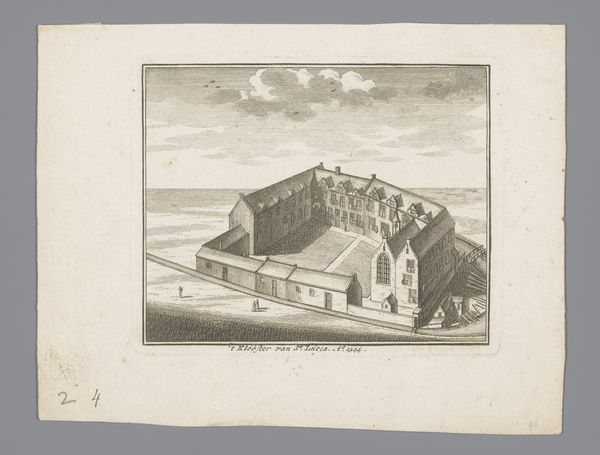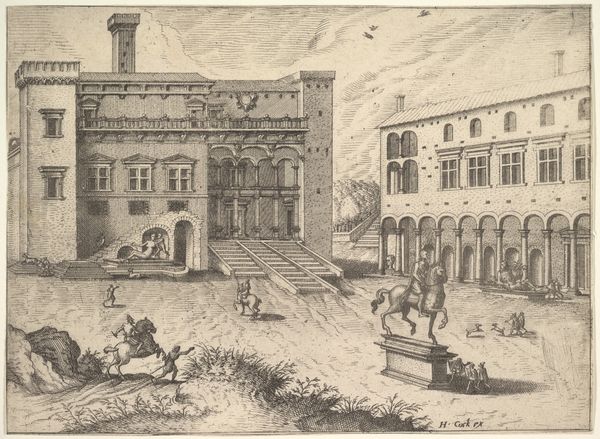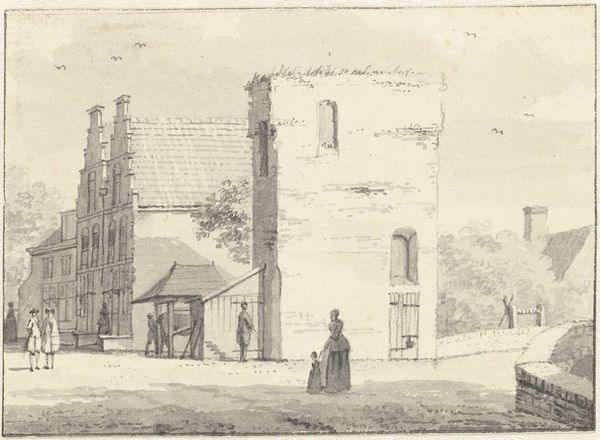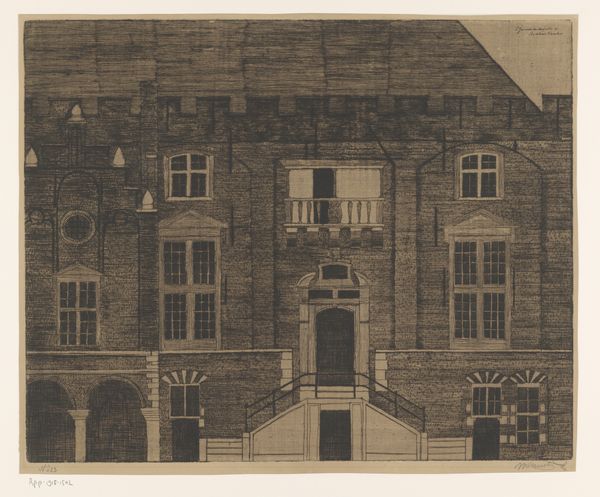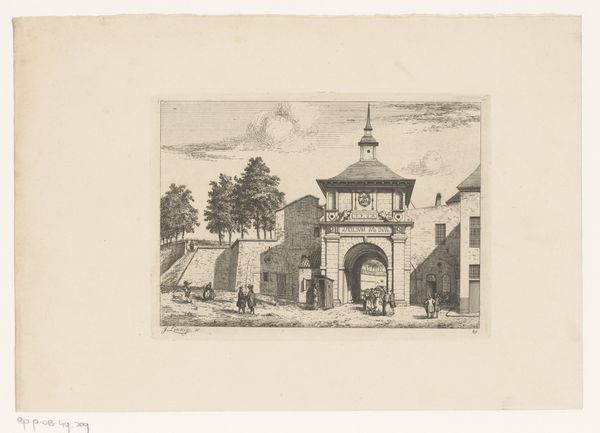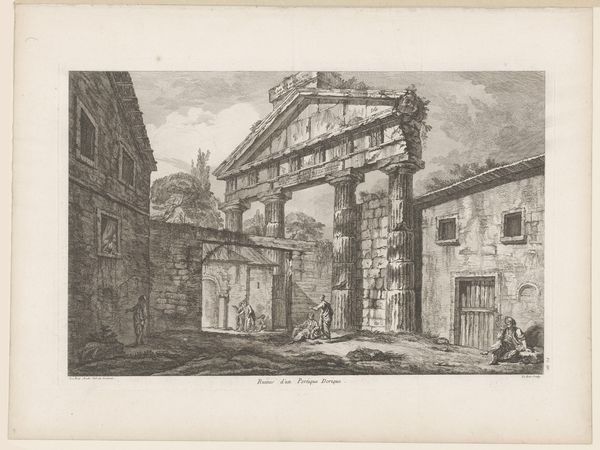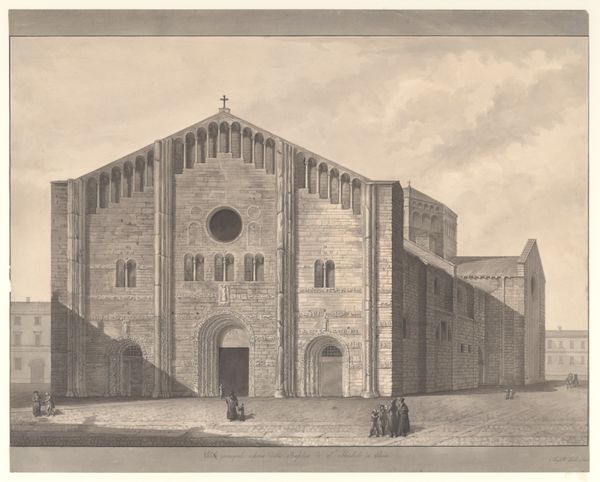
#
pencil drawn
#
amateur sketch
#
aged paper
#
light pencil work
#
parchment
#
pencil sketch
#
old engraving style
#
charcoal drawing
#
pencil drawing
#
pencil work
Dimensions: height 170 mm, width 287 mm
Copyright: Rijks Museum: Open Domain
Editor: Here we have Jean Théodore Joseph Linnig’s "Vierschaar van Antwerpen," created around 1845. It appears to be a pencil drawing, and the style has an old-fashioned, almost documentary feel. What do you see in this piece beyond a simple architectural study? Curator: Beyond the depiction of the Antwerp Vierschaar, which was a site of justice, I see a powerful commentary on social structures and access to justice. Look at the barred windows and imposing architecture. Who do you think this building was designed to intimidate? Editor: I suppose those accused of crimes? It certainly isn’t welcoming. Curator: Exactly. Consider the placement of the mother and child in the foreground. Does their presence alter your interpretation of the building's significance? Does the small dog? Editor: I hadn't really noticed them initially, but now they feel…vulnerable, juxtaposed against this imposing structure. Maybe they’re meant to represent those most vulnerable to the legal system. Curator: Precisely. Linnig is prompting us to think critically about who the justice system serves and protects and who it marginalizes. It also prompts consideration of social support and equality during the mid-19th century. Does the setting itself, devoid of foliage or any soft lines, suggest anything to you? Editor: Yes, it highlights the harsh, unyielding nature of the legal environment. So, it's more than just a historical record, it’s a form of social critique. I hadn't considered that. Curator: Indeed. By examining art within its socio-political framework, we gain insight into the artist’s engagement with broader societal concerns and perhaps even a call for reform. Editor: I’ll never look at architectural drawings the same way again! Curator: Hopefully! It’s crucial to remember the visual arts have always had a very important contribution to understanding gender and society.
Comments
No comments
Be the first to comment and join the conversation on the ultimate creative platform.

